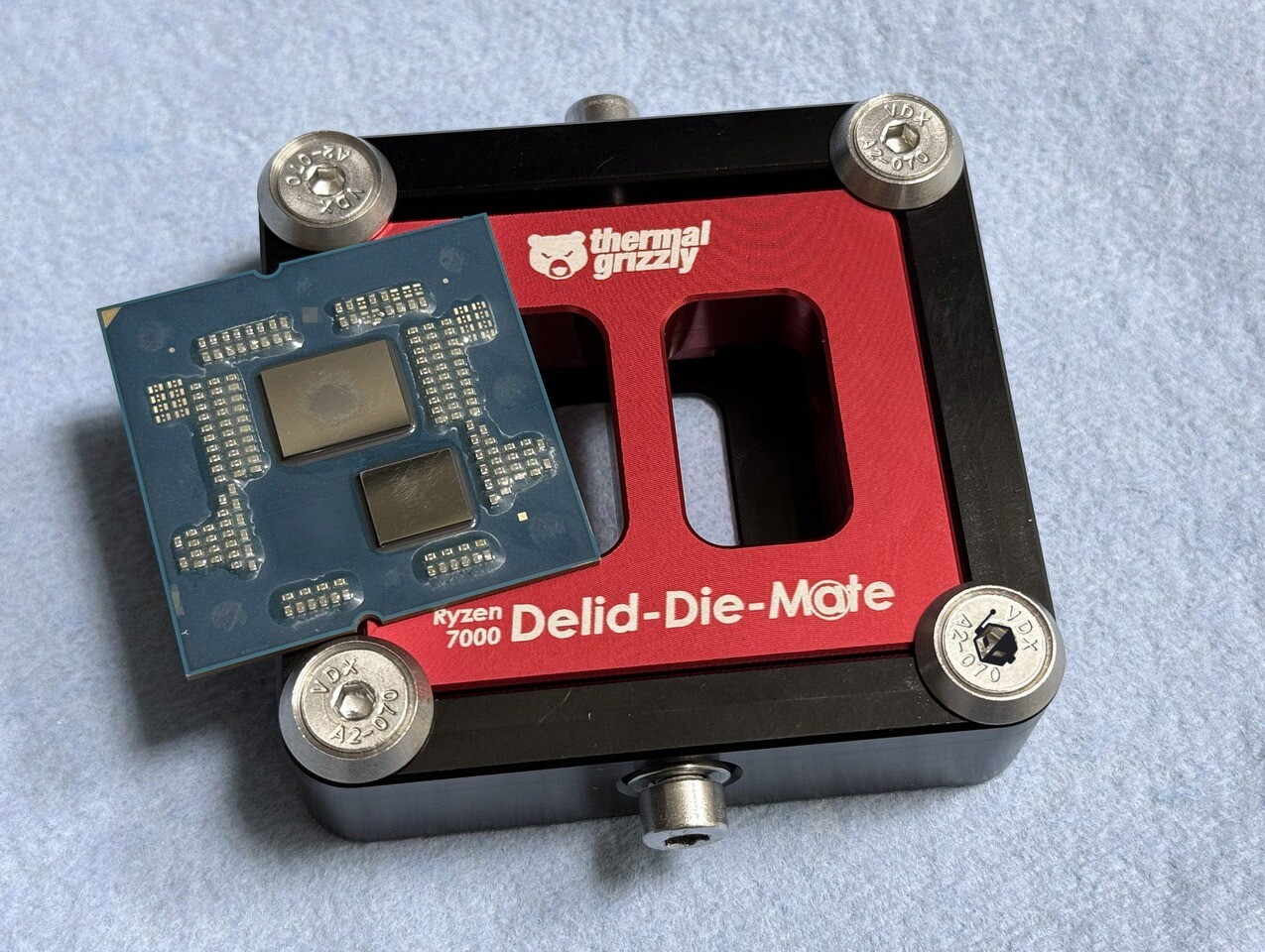De-Lidded Ryzen 7 9800X3D Pic Confirms 3D V-cache Die Moved Below the CCD

The upcoming AMD Ryzen 7 9800X3D processor is already in the hands of hardware modders, who have put the chip through de-lidding (removal of the integrated heatspreader or IHS), revealing what’s underneath. In the 9800X3D de-lidded picture, the CCD appears plain, with no apparent L3D on top, unlike on the 7800X3D (second picture, below). We’d been hearing reports that with the 9000X3D series, AMD has redesigned the way the 3D V-cache die (L3D) and the CPU complex die (CCD) are stacked together, by inverting their arrangement, such that the CCD is on top, and the L3D below.
In past generations of X3D processors, such as the 7800X3D and the 5800X3D, the L3D is stacked on top of the CCD, with structural silicon handling the crucial task of transferring heat from the CPU cores to the IHS. This inversion in stacking should ensure better thermals for the CPU cores, the 9800X3D boosting behavior should be similar to that of non-X3D chips, such as the 9700X. AMD has given the 9800X3D a 120 W TDP and 5.20 GHz boost frequency. This inversion of the CCD and L3D stacking is probably what is behind the “X3D Reimagined” teaser blurb by AMD.











